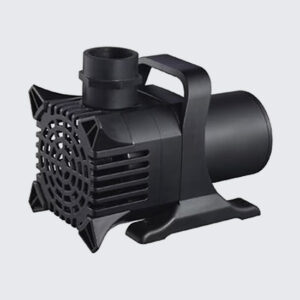Creating a serene and visually appealing pond fountain requires the right equipment. One of the most crucial components is the pump, which ensures proper water circulation and maintains the health of your pond ecosystem. Choosing the best pump for your pond fountain can significantly impact both the efficiency and longevity of your fountain. This article will guide you through the essential considerations for selecting the ideal pump for your pond fountain in the year 2024.
Understanding Your Pond's Needs
Before you buy a pump for a pond fountain, it's essential to understand your pond's specific requirements. Not all pumps are created equal, and choosing the right one involves considering factors such as the size of your pond, the type of fountain you want, and the water features you plan to incorporate. First, measure the dimensions of your pond to determine the water volume. This measurement will help you select a pump with the appropriate flow rate. Ideally, the pump should circulate the entire volume of water at least once per hour. For instance, if your pond holds 1,000 gallons of water, you should buy a pump for the pond fountain that has a flow rate of at least 1,000 gallons per hour (GPH).
Next, consider the type of fountain you wish to install. Different fountain styles require varying amounts of water pressure and flow. A simple spout might need less power compared to a multi-tiered waterfall or a complex spray pattern. Additionally, take into account any other water features, such as waterfalls or streams, as these will also influence your pump choice. Knowing these specifics before you buy a pump for your pond fountain will save you time and ensure you select the most efficient option.
Types Of Pumps: Submersible vs. External
Pond pumps come in two main types: submersible and external. Each type has its advantages and disadvantages, making them suitable for different applications.
Submersible pumps are designed to operate underwater, making them ideal for smaller ponds and fountains. These pumps are typically easier to install, as they can be placed directly in the water. They are also quieter since the water helps muffle the sound of the motor. However, submersible pumps may require more frequent maintenance due to debris and algae buildup. It's important to regularly clean the pump and check for any clogs to maintain optimal performance.
On the other hand, external pumps are installed outside of the pond. These pumps are generally more powerful and can handle larger volumes of water, making them suitable for bigger ponds or more elaborate water features. External pumps are also easier to access for maintenance and repairs.
Energy Efficiency And Power Consumption
Energy efficiency is a crucial consideration when selecting a pump for your pond fountain. An energy-efficient pump not only reduces your electricity costs but also minimizes your environmental footprint. Look for pumps with energy-efficient motors and technologies, such as variable speed controls. These features allow the pump to adjust its flow rate based on the water demand, resulting in lower power consumption during periods of reduced activity.
When comparing pumps, check the power consumption ratings, typically measured in watts. A lower wattage pump that still meets your flow rate requirements will be more cost-effective in the long run. Additionally, consider investing in a pump with a built-in timer or programmable settings. These features enable you to schedule the pump's operation, ensuring it runs only when needed, further conserving energy.
Pump Maintenance And Longevity
Proper maintenance is key to ensuring the longevity and efficiency of your pond pump. Regular maintenance tasks include cleaning the pump, checking for clogs, and inspecting the impeller for wear and tear. Submersible pumps, in particular, require frequent cleaning due to their constant exposure to water and debris. Use a brush or a cloth to remove any dirt or algae from the pump's exterior and interior components.
It's also essential to check the pump's intake and outlet for any obstructions. Clogged intakes can reduce the pump's efficiency and lead to overheating. If your pump has a filter, clean or replace it as recommended by the manufacturer. For external pumps, ensure that the plumbing connections are secure and free of leaks.
Selecting The Right Pump Size
Choosing the correct pump size is crucial for the optimal performance of your pond fountain. As mentioned earlier, the pump's flow rate should match the volume of your pond to ensure adequate water circulation. However, it's also important to consider the head height, which is the vertical distance the water needs to be lifted from the pump to the fountain's highest point.
Pumps are rated based on their flow rate at different head heights. When selecting a pump, look at the flow rate chart provided by the manufacturer. This chart shows how the pump's flow rate decreases as the head height increases. Choose a pump that can deliver the required flow rate at your fountain's maximum head height. For example, if your fountain's highest point is 5 feet above the pump, ensure the pump can maintain the necessary flow rate at that height.
Conclusion
Selecting the best pump for your pond fountain in 2024 involves understanding your pond's specific needs, choosing between submersible and external pumps, prioritizing energy efficiency, and performing regular maintenance. By taking these factors into account, you can ensure your pond fountain operates efficiently and remains a beautiful focal point in your garden. Whether you're installing a new fountain or upgrading an existing one, making an informed decision about your pump will enhance the overall health and aesthetics of your pond.



